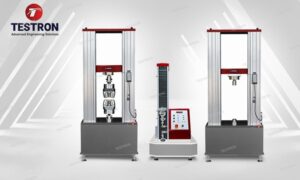Most modern businesses rely on electronic data interchange (EDI) for document exchange among trading partners, with research showing it costs only one-third as much. A prominent American company even reported cutting its order processing costs from $38/order down to just $1.35 with EDI!
Do you realize that the electronic data interchange (EDI) we rely on today wasn’t readily available until a few decades ago? Can you imagine the world before EDI solutions existed?
Electronic Data Interchange (EDI) has been around since the 1960s, yet many organizations continue to rely on legacy systems when processing B2B transactions. Transactions such as Purchase Orders, Sales orders, Invoices, Advance Ship notices, and Functional Acknowledgments often involve several steps for processing. Furthermore, traditional B2B transactions often entail paper documents and human intervention that is susceptible to human mistakes; but with EDI’s use paper documents are virtually eliminated while human intervention is significantly decreased – creating more chances for error-free interactions! EDI uses technology that eliminates paper documents while human intervention reduces risk.
EDI service providers allow organizations to automate the exchange of data across an entire supply chain, ensuring business-critical information arrives on time. According to Dart Consulting’s market report, its estimated market size will grow from the estimated 2017 estimate of $860 million up to an expected total market size of around $2.1 billion by 2020. But what are its advantages over more conventional forms of business communication and information exchange?
Businesses were dependent on the manual exchange of paper-based documents, a process that was time-consuming and error-prone. Documents such as invoices, purchase orders, and receipts were distributed via faxes or regular mail; human input was required both for data entry as well as transmission – leaving modern businesses unable to keep pace with modern business demands.
Talking about EDI for Manufacturing Industry
Manufacturing and EDI (Electronic Data Interchange) are two interconnected aspects of modern business operations. Let’s explore their relationship and significance:
Manufacturing:
Manufacturing refers to the process of converting raw materials or components into finished products through various production activities. It involves planning, designing, assembling, and quality control to create goods for sale or distribution.
Manufacturing companies strive to optimize their processes to improve efficiency, reduce costs, and deliver high-quality products. To achieve these goals, they rely on effective communication, coordination, and integration with their suppliers, partners, and customers.
Electronic Data Interchange (EDI):
EDI refers to the electronic exchange of business documents and information between trading partners in an industry-standardized electronic format. It enables the seamless transmission of structured data, such as purchase orders, invoices, shipping notices, and inventory updates, without the need for manual data entry or paper documents.
EDI streamlines business transactions by automating the exchange of information between different parties involved in the supply chain. It eliminates manual processes, reduces errors, enhances data accuracy, and accelerates the speed of business transactions.
Integration of Manufacturing and EDI:
In the manufacturing industry, integrating EDI into the business processes offers several benefits:
1. Streamlined Procurement
Manufacturers can use EDI to send purchase orders to suppliers electronically, ensuring faster order processing, reducing lead times, and minimizing errors associated with manual data entry.
2. Efficient Inventory Management
By utilizing EDI, manufacturers can receive advanced shipping notices (ASNs) from suppliers, providing real-time visibility into incoming shipments. This enables better inventory planning, reduces stockouts, and improves overall supply chain efficiency.
3. Just-in-Time (JIT) Manufacturing
JIT manufacturing relies on precise coordination between suppliers and manufacturers to deliver components or raw materials at the right time. EDI facilitates the timely exchange of information, allowing manufacturers to adjust production schedules based on real-time data.
4. Order Fulfillment and Shipping
EDI supports the automatic generation of shipping notices, invoices, and other relevant documents, enabling seamless order fulfillment and improving shipping accuracy.
5. Enhanced Collaboration
Manufacturers can integrate their EDI systems with those of their trading partners, fostering better collaboration, information sharing, and visibility across the supply chain. This integration helps in reducing response times, resolving issues quickly, and improving overall customer satisfaction.
Overall, the integration of manufacturing and EDI helps streamline operations, improve efficiency, reduce costs, and enhance the overall competitiveness of manufacturing companies. By leveraging the power of EDI, manufacturers can optimize their supply chain, enhance customer relationships, and stay ahead in today’s dynamic business environment.
Some Important EDI Documents used In Manufacturing
In manufacturing, several EDI (Electronic Data Interchange) documents are commonly used to facilitate efficient communication and data exchange between different parties involved in the supply chain. Here are some key EDI documents used in manufacturing:
1. Purchase Order (PO)
The Purchase Order document is used by a buyer to communicate their intent to purchase goods or services from a supplier. It includes details such as item descriptions, quantities, prices, delivery dates, and payment terms.
2. Purchase Order Acknowledgment (POA)
The Purchase Order Acknowledgment is sent by the supplier to confirm their acceptance and acknowledgment of the received purchase order. It typically includes information regarding the order’s acceptance, expected delivery dates, quantities, and any exceptions or changes made.
3. Advance Shipping Notice (ASN)
Also known as the Despatch Advice, the Advance Shipping Notice is sent by the supplier to the buyer to provide detailed information about the shipment. It includes data such as the contents of the shipment, packaging details, carrier information, tracking numbers, and expected delivery dates.
4. Invoice (INV)
The Invoice document is sent by the supplier to request payment from the buyer for the goods or services provided. It includes details such as the billing amount, itemized charges, taxes, shipping costs, payment terms, and any applicable discounts or adjustments.
5. Functional Acknowledgment (997)
The Functional Acknowledgment is a general-purpose document used to confirm the receipt and syntactical correctness of the EDI transmission. It serves as a notification that the EDI message was successfully received and processed by the recipient.
6. Inventory Inquiry/Advice (846)
The Inventory Inquiry/Advice document is used to inquire about the inventory levels of specific products or provide inventory information to trading partners. It helps manufacturers and suppliers maintain accurate inventory records and facilitates efficient inventory planning and management.
7. Shipment Status Message (214)
The Shipment Status Message is sent by the carrier or logistics provider to provide information about the status and progress of a shipment. It includes details such as shipment dates, current location, expected delivery dates, and any exceptions or delays encountered during transit.
These are some of the commonly used EDI documents in manufacturing. However, it’s important to note that the specific documents and their formats may vary depending on industry standards, trading partner requirements, and regional regulations. EDI systems can be customized to support additional documents or data elements based on the specific needs of the manufacturing organization and its trading partners.
How Can EDI Help Your Organization Saving Money
Electronic Data Interchange (EDI) can help organizations save money in many ways. Firstly, it eliminates paper-based transactions, which reduces the cost of printing, storing, and mailing paper documents. Secondly, it streamlines the supply chain process by automating data exchange between trading partners. This reduces errors, delays, and the need for manual intervention, which saves time and money.
Thirdly, EDI can help organizations negotiate better deals with suppliers by providing real-time visibility into inventory levels, order status, and delivery schedules. This helps to optimize procurement and reduce inventory holding costs. Finally, EDI can help top EDI companies usa to comply with regulatory requirements, such as electronic invoicing and reporting, which can result in cost savings and avoid penalties.EDI (Electronic Data Interchange) offers several ways to save money in manufacturing by streamlining processes, improving efficiency, and reducing costs. Here are some ways in which EDI can contribute to cost savings:
1. Automation and Reduced Manual Entry
EDI eliminates the need for manual data entry and paper-based processes, reducing the associated labor costs and the risk of human errors. By automating the exchange of information, EDI minimizes the time and effort required to process and handle documents such as purchase orders, invoices, and shipping notices.
2. Improved Order Accuracy
Manual order processing is prone to errors, which can lead to costly mistakes such as incorrect shipments, wrong quantities, or pricing discrepancies. EDI ensures accurate and error-free data transmission, reducing the likelihood of order errors and associated costs of returns, rework, and customer dissatisfaction.
3. Faster Order Processing
EDI enables real-time or near-real-time exchange of information, allowing for faster order processing and fulfillment. Quicker order processing can lead to shorter lead times, improved customer satisfaction, and increased operational efficiency.
4. Efficient Inventory Management
EDI facilitates the exchange of advanced shipping notices (ASNs) between trading partners. ASNs provide detailed information about incoming shipments, enabling manufacturers to plan their inventory more effectively, reduce stockouts, optimize storage space, and minimize excess inventory carrying costs.
5. Reduced Paper and Printing Costs
Adopting EDI eliminates the need for paper-based documents, such as purchase orders, invoices, and shipping notices. This reduction in paper usage not only saves costs associated with paper, printing, and storage but also aligns with environmentally friendly practices.
6. Improved Supply Chain Visibility
EDI provides real-time visibility into the status of orders, shipments, and inventory levels across the supply chain. Enhanced visibility allows manufacturers to identify and address bottlenecks, anticipate potential issues, and optimize production and distribution processes, ultimately reducing costs associated with delays, disruptions, and inefficiencies.
7. Enhanced Collaboration and Reduced Communication Costs
EDI promotes seamless communication and collaboration between trading partners by providing a standardized and automated platform for exchanging information. This eliminates the need for manual communication methods such as phone calls, faxes, or emails, reducing communication costs and improving overall efficiency.
8. Minimized Error Handling and Dispute Resolution
The accuracy and reliability of EDI data transmission significantly reduce the occurrence of errors, discrepancies, and disputes. With fewer errors to rectify and disputes to resolve, manufacturers save time, effort, and associated costs in handling and resolving such issues.
Overall, the adoption of EDI in manufacturing optimizes processes, enhances accuracy, reduces manual effort, and improves visibility across the supply chain. These factors contribute to cost savings by minimizing errors, streamlining operations, and enabling better resource allocation and decision-making.
To Sum Up
Long term, all the above factors would help your company save a considerable amount of money while increasing profitability. It would be wise to assess existing business processes to identify areas where an EDI implementation would offer greater cost savings and improve efficiencies.
Work with an EDI service provider to ensure all trading partners implement a consistent approach to EDI, or automate your EDI process using business integration solutions such as the EDI Studio for Dynamics 365 FO.
Start improving the efficiency of your business today by learning about EDI benefits.



































